Oryu Goarahaebyeon Beach (오류고아라해변)
14.4 Km 41219 2024-02-23
277-8 Oryu-ri, Gampo-eup, Gyeongju-si, Gyeongsangbuk-do
Oryu Goarahaebyeon Beach, located near Gampo Port, is known for its soft sand and is famous for sand baths. It's an ideal spot for camping, boasting a 1km stretch of white sandy beach, shallow waters, and a lush pine forest. Within the pine forest, there's a campsite where visitors can enjoy caravan or tent camping. During the summer, marine leisure facilities like banana boats and motor boats are available. Nearby tourist attractions include Songdaemal Lighthouse and Gampo Marine Park.
Dayu (다유)
14.4 Km 10506 2019-08-01
84-5, Moksil-gil, Cheonbuk-myeon, Gyeongju-si, Gyeongsangbuk-do
+82-54-773-8866
Located in Mulcheon-ri, Gyeongju-si, Dayu offers a comfortable resting place for visitors who need to rest and recharge during their trip. The restaurant serves nutritious meals for vegetarians and traditional teas.
Gyeongju Bae-dong Samneung Royal Tombs (경주 배동 삼릉)
14.4 Km 24055 2020-04-06
Bae-dong, Gyeongju-si, Gyeongsangbuk-do
+82-54-779-6100
Samneung meaning "three royal tombs," has strong ties to history. The three royal tombs house three kings of the Silla Kingdom: King Adala (8th King of the dynasty), King Sindeok (53rd) and King Gyeongmyeong (54th).
King Adala, who cared deeply for his people, went to war after his citizens were abducted by the invaders of Baekje. But when Baekje asked for a peace treaty, King Adala released the prisoners he took during the engagement. During his rulling, a kingdom in Japan sent an envoy to ask for friendly relations with Silla. King Adala’s tomb is 58m in circumference at the base, 5.4m in x_height and 18m in diameter.
When King Hyogong died without any heirs, the people of the kingdom crowned his son-in-law as their next king – King Sindeok. During his reign, King Sindeok devoted himself to protecting his kingdom from invasions by Gyeonhwon and Gungye. The royal tomb is 61m in circumference at the base, 5.8m in x_height and 18m in diameter. It was robbed twice, inviting investigations in 1953 and 1963. The investigations revealed the tomb to be a chamber made of stone.
King Gyeongmyeong, the son of King Sindeok, together with Wanggeon, the founder of the Goryeo dynasty, successfully defeated Gyeonhwon’s attack against Daeyaseong Fortress. During his reign, he attempted to establish diplomatic relations with the Hudang dynasty of China, but was unsuccessful. The tomb is 50m in circumference at the base, 4.5m in x_height and 16m in diameter.
Gyeongju Poseokjeong Pavilion Site (경주 포석정지)
14.5 Km 36450 2020-10-06
816, Namsansunhwan-ro, Gyeongju-si, Gyeongsangbuk-do
+82-54-745-8484
Poseokjeong Pavilion served as a separate palace where kings enjoyed banquets with nobles. The building no longer exists, but the abalone-shaped stone water canal still remains, speculated to have been built during the Unified Silla period although the exact year is unknown. The water canal has an estimated length of 10 meters, with a x_width of approximately 35 centimeters and an average depth of 26 centimeters. Based on Chinese writings from 353, it is said that drinking glasses were floated on the canal. One popular party game had guests creating poems before the glass had passed nine sections of the canel. Guests who could not do this had to drink three glasses. Modern research has shown that the site was not merely a place for fun, but also served as a meeting venue for the royal family, as well as for holding memorial services.
Gyeongju Country Club (경주컨트리클럽)
14.6 Km 12809 2015-02-16
182-98, Bomun-ro, Gyeongju-si, Gyeongsangbuk-do
+82-54-745-2228
Gyeongju Country Club is located within Bomun Tourism Area with spectacular scenery of the Bomun Lake. It is within 15 minutes from Gyeongju and is aiming to become the best golf course in Korea.
The characteristic of Gyeongju Country Club is "Light Golf" which has enabled players to play golf at night and at daybreak under perfect light settings. It is located in Gyeongju, which is a tourism city, attracting the attention of tourists who love golf.
Bunhwangsa Temple (분황사)
14.6 Km 31442 2024-02-29
94-11 Bunhwang-ro, Gyeongju-si, Gyeongsangbuk-do
Bunhwangsa Temple, located next to the ruins of Hwangnyongsa Temple in Gyeongju, was established in 634 during the Silla dynasty. Visitors can see cultural assets such as the Stone Brick Pagoda designated as a national treasure, and the Pedestal for the Stele of State Preceptor Hwajaeng registered as a Historic Site. Despite being a significant and ancient temple, much of it was lost during wars such as the Mongolia invasions and the Japanese invasions of Korea, leaving only a few buildings and temple grounds like Bogwangjeon Hall. Nearby, there is the Hwangnyongsa Museum.
Donggung Palace and Wolji Pond (경주 동궁과 월지)
14.7 Km 136783 2024-04-08
102 Wonhwa-ro, Gyeongju-si, Gyeongsangbuk-do
+82-54-750-8655
Donggung Palace and Wolji Pond in Gyeongju are secondary palace sites of Silla. The palace, along with other secondary palaces, was used as the eastern palace where the prince lived, and banquets were held during auspicious events or to welcome important guests. It is also where King Gyeongsun of Silla invited King Wang Geon of Goryeo and had a feast to complain about the critical situation in 931 after being invaded by Gyeon Hwon. After unifying the three kingdoms, Silla's King Munmu dug a large pond in the 14th year of his reign (674), creating three islands in the center of the pond along with a 12-peaked mountain to the northeast. Beautiful flowers and trees were planted here, and rare birds and animals were raised. In the Samguksagi (History of the Three Kingdoms) from the Goryeo dynasty, there is only a record of Imhaejeon Hall and no mention of Anapji Pond. After Silla fell and the place fell into ruins during the Goryeo and Joseon dynasties, poets and calligraphers looked at the pond and recited a line of poetry that says, “The once splendid palace is gone, and only geese and ducks fly in.” That's why the place is called Anapji, using the letters 'an' for wild geese and 'ab' for ducks. In the 1980s, pottery fragments with the inscription "Wolji" were excavated, and it was confirmed that this area was originally called "Wolji," which means "a pond that reflects the moon." And the name Anapji was changed to Wolji Pond afterwards.
Gyeongju Hwangnyongsa Temple Site (경주 황룡사지)
14.7 Km 21171 2021-01-29
64-19, Imhae-ro, Gyeongju-si, Gyeongsangbuk-do
+82-54-779-6100
Hwangnyongsa Temple Site is located in front of Bunhwangsa Temple in Guhang-dong, Gyeongju. During the Silla Era, the Hwangnyongsa Temple was the nation’s largest temple and housed the bulk of the country’s major Buddhist treasures.
Construction of the temple began in 553 on a field east of the royal compound under the commission of King Jinheung. The king originally planned to build a palace, but decided to build a temple instead, after receiving reports that a yellow dragon had been spotted on the building site. The temple was thus named Hwangnyongsa (Temple of Yellow Dragon) and was completed in 569, seventeen years after construction began. The temple murals featured an old pine tree drawn by Artist Solgeo. During the Silla Era, the temple was the center of state-sanctioned Buddhism.
Later, when monk Jajang was studying in China during the Tang dynasty, he came across a god as he was passing by Taihe Pond. The god said to him, “The yellow dragon, which is my eldest son, is guarding Hwangnyongsa Temple upon orders of Brahma, the Creator. If you build a nine-story pagoda upon your return to Silla, the neighboring states will surrender and pay tribute, and the royal cause will be stronger. Once the construction of the pagoda is complete, prepare a memorial service for the local gods and pardon any of the country's criminals. If you follow all I have told you, no other state will dare invade Silla.”
After this encounter, Jajang returned to Silla and convinced Queen Seondeok to build the nine-story pagoda. Master architect Abiji of the neighboring state Baekje designed the pagoda and the project was built by Yongchun and 200 men using wood and stone. The night before the columns were to be erected, Architect Abiji of Baekje dreamed of the fall of Baekje and refused to complete the project. With a peal of thunder, an old monk and a man of great strength suddenly appeared from the temple's main hall, erected the columns, and magically disappeared. Abiji was so shocked at the sight that he accepted his country’s future demise as the fate of the gods and once again restarted work on the temple. (From Samgungnyusa, the Memorabilia of the Three Kingdoms)
In the twenty-three years following the completion of the pagoda, Queen Seondeok unified the Three Kingdoms; later, numerous scholars pointed to the pagoda as a contributing factor in the unification. Of the three treasures of Silla, two were located at Hwangnyongsa Temple. The largest bell of Silla was also in the temple, but was taken away during the Mongol invasion. The highest monks of Silla preached at the temple, and many kings came to listen to the Buddhist teachings.
During excavation work in July 1969, the massive foundation stones of the sermon hall, auditorium, and pagoda were found. Eight years of archaeological excavations and studies revealed the unique layout of the temple grounds, which consisted of one pagoda and three halls; also found were 40,000 or so ancient artifacts. Though foundation stones and other structures from the bottom of the temple were identified through excavation, there are no historical clues about the temple’s upper design, making the restoration of the temple in its entirety practically impossible. The size of the temple, based on archeological findings, was about 70 acres, roughly eight times larger than that of Bulguksa Temple.
Gyeongju Wolseong Palace Site (Banwolseong Fortress) (경주 월성(반월성))
14.7 Km 25901 2023-01-03
Inwang-dong, Gyeongju-si, Gyeongsangbuk-do
+82-10-3226-6390
This was the location of the palace-fortress during the Silla dynasty (57 BC ~ AD 935). The fortress takes after its name, which, literally translates to mean a crescent moon shape on top of a hill. The famous history books of Samgukyusa mention that Silla’s 4th King Seoktalhae (AD 57~80) thought this area was an ideal spot for the fortress and bought the land from a nobleman. The 2nd King Namhae (AD 4~24) impressed by Seoktalhae’s actions, took him in as his son-in-law, later, becoming the 4th king. The area was then under Silla’s rule for 900 years, the last king being the 56th, Gyeongsoon (AD 927~935).
Although the magnificent grandeur of the palace is now just an empty lot, it has been told that this area was filled with imperial buildings during the Silla dynasty. Currently, the region of Wolseong has a freezer made out of rocks called Seokbinggo, an archery range, a horse-riding field, and a traditional playground, which resembles the grounds of the Joseon Period (the dynasty that ruled the Korean peninsula from 1392-1910).
Homeplus Stores - Ulsan Buk-gu Branch [Tax Refund Shop] (홈플러스스토어즈 울산북구)
14.8 Km 0 2024-04-23
26, Sindap-ro, Buk-gu, Ulsan
-
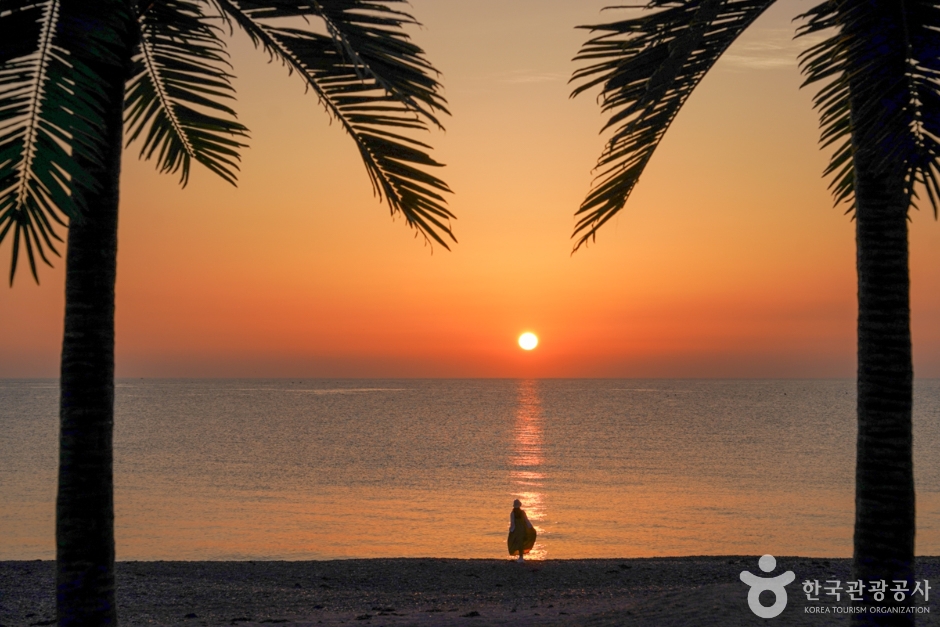
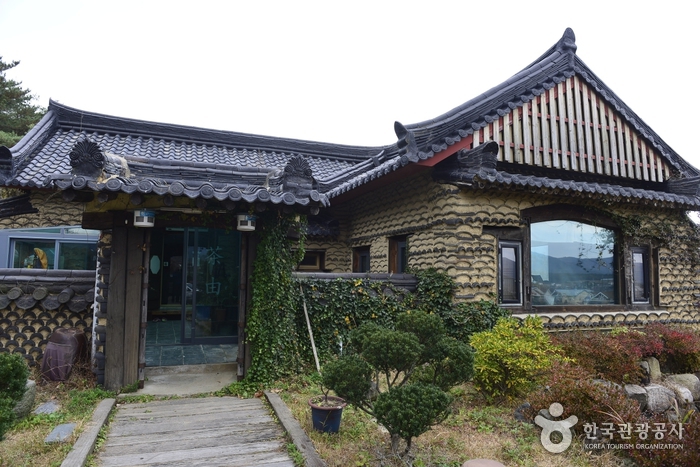
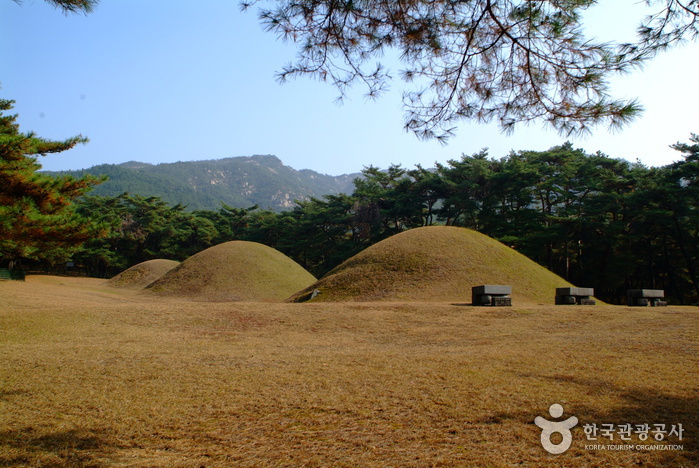
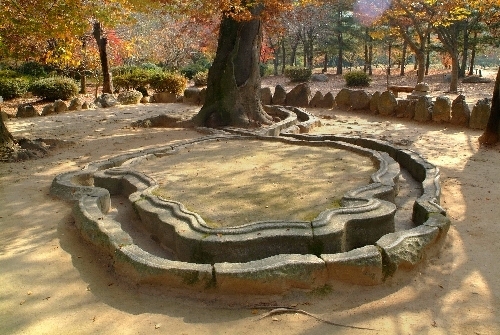

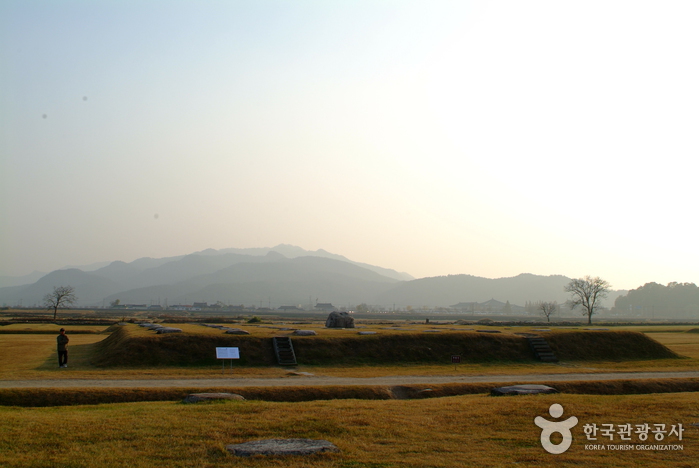
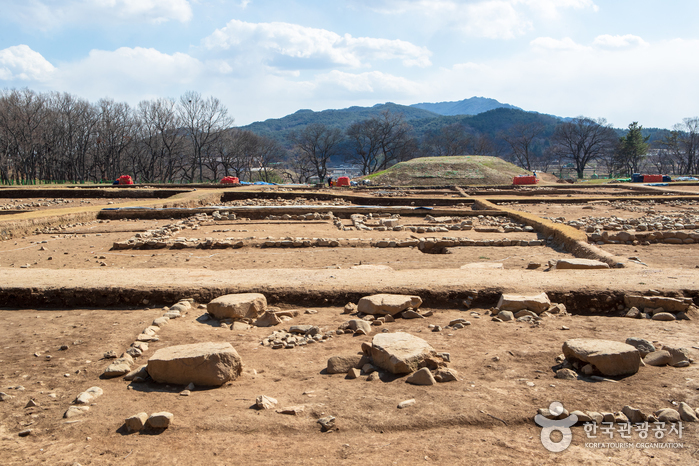
![Homeplus Stores - Ulsan Buk-gu Branch [Tax Refund Shop] (홈플러스스토어즈 울산북구)](http://tong.visitkorea.or.kr/cms/resource/71/2884171_image2_1.jpg)
 English
English
 한국어
한국어 日本語
日本語 中文(简体)
中文(简体) Deutsch
Deutsch Français
Français Español
Español Русский
Русский